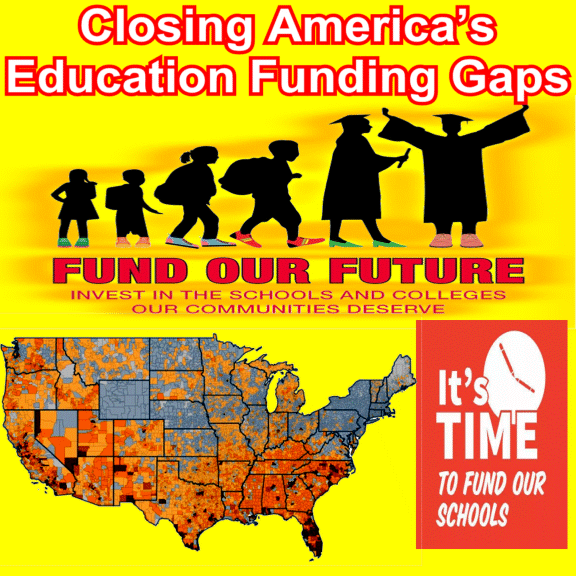- Districts with high concentrations of students living in poverty are more likely to have funding gaps, and these students experience significantly larger funding gaps, than wealthier districts.
- Low-income school districts are more than twice as likely to have a funding gap as higher income districts.
- Districts with the highest concentrations of poverty—those in the highest 20 percent of districts by Census poverty rate—are 2.6 times more likely to have a funding gap.
- The average gap in these districts is more than $6,700 per pupil.
- Districts with high concentrations of Latinx and Black students have much larger funding gaps, and are more likely to have funding gaps to begin with, than majority white districts.
- Districts that have more than 50 percent Black or Latinx enrollment are nearly twice (1.95 times) as likely to have a funding gap than districts with minority enrollment less than 50 percent.
- Nationally, districts with over 50 percent Black and/or Latinx students face a funding gap of more than $5,000 per pupil on average (see Figure 1).
Founded as the Co-operative League in 1919 by the progressive business leader Edward Filene, and later renamed to the Twentieth Century Fund, TCF is one of the oldest public policy research institutes in the country. As we left behind the twentieth century, we entered into the early 2000s with the same mission but a new name: The Century Foundation.
Over our long history, we have been at the forefront of positive change in some of the most critical areas of domestic and foreign policy. Today, TCF continues this legacy by researching issues that range from pursuing fairness and opportunity in education; protecting workers and further strengthening the social safety net; encouraging democracy and ensuring personal rights in the tech age; and promoting stability and prosperity abroad.
Our experts come from academia, journalism, and public service—all with a shared commitment to advancing progressive ideas that benefit the public good. Through our evidence-based research and policy analysis, we seek to inform citizens, guide policymakers, and reshape what government does for the better.


